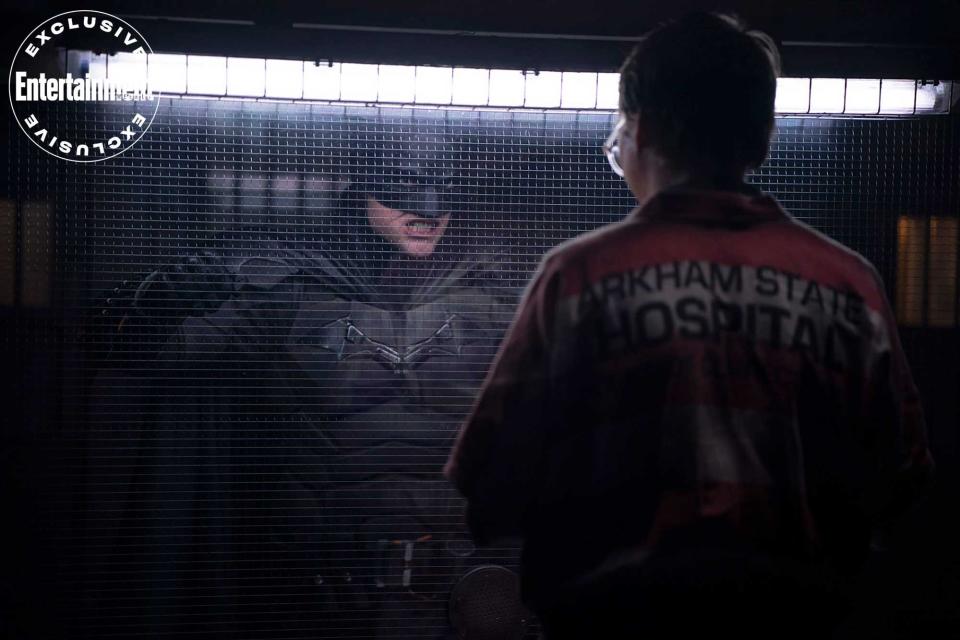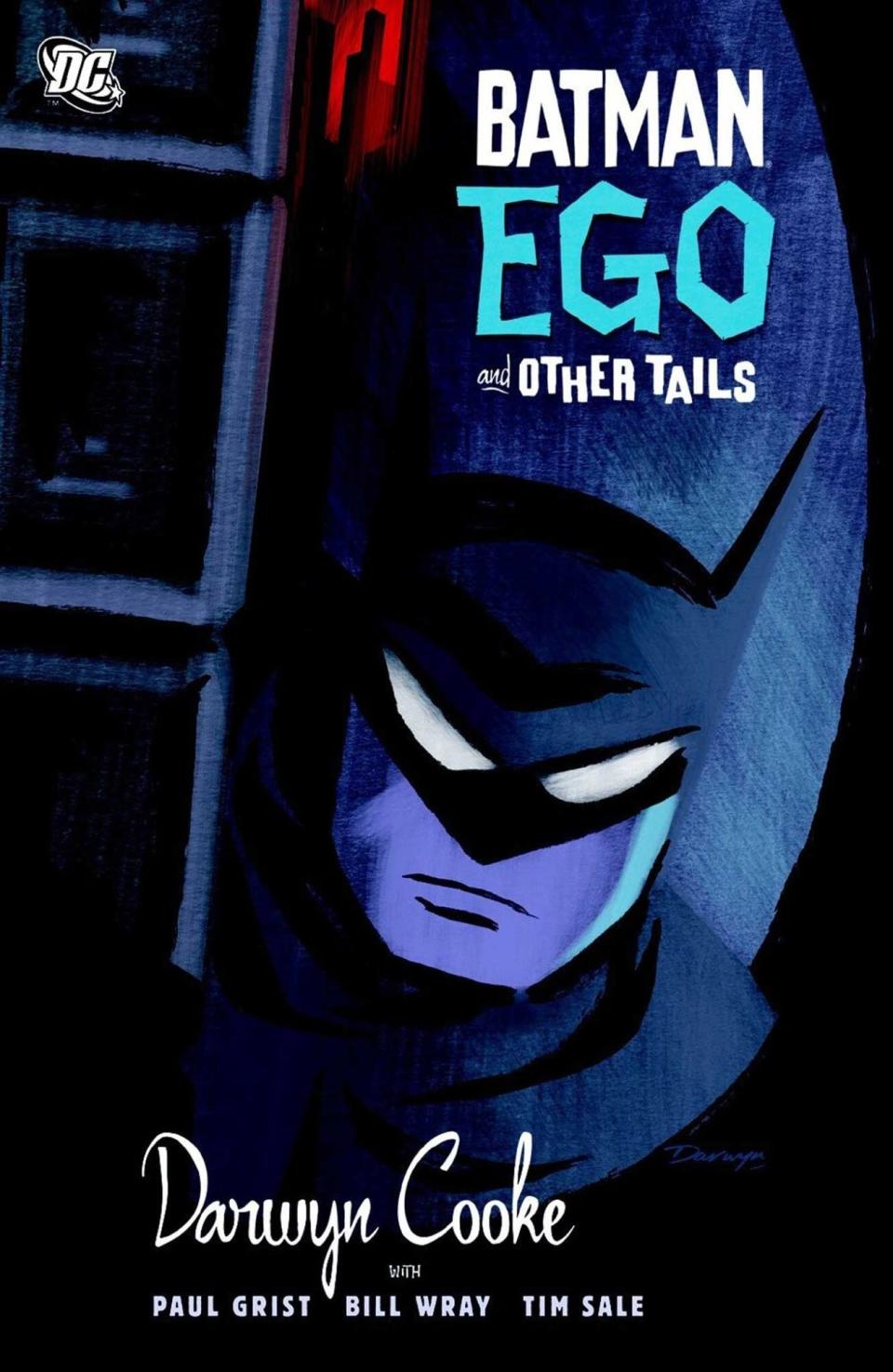The Batman 's Robert Pattinson reveals the unusual comics that inspired his Dark Knight
- Oops!Something went wrong.Please try again later.
To craft a new Batman, Robert Pattinson consumed as many comics as possible and found inspiration in some unlikely places.
Typically when there's a new Batman movie, those involved cite usual suspects like Batman: Year One and Batman: The Long Halloween as inspiration. And sure, some of those comics influenced Matt Reeve's The Batman, which reboots the franchise without rehashing the titular hero's origin story. But Pattinson also consulted less obvious fare to find his way into the character, who's in just his second year as a vigilante in the film. Since The Batman doesn't depict Bruce suiting up for the first time, Pattinson's research helped him understand the billionaire's motivations for donning the cape and cowl.
"In the Christopher Nolan movies, it was kind of addressed in a pragmatic way and kind of explained pretty well," says Pattinson in the video above. "I was trying to find a different angle on it."

Jonathan Olley/DC Comics/Warner Bros. Robert Pattinson and Paul Dano in 'The Batman'
That's where Batman: Shaman (by Dennis O'Neil, John Beatty, and Edward Hannigan) and, to a lesser extent, the story "The Man Who Fell" (O'Neil and Dick Giordano) came in. Like The Batman, the former is set during an early part of the Caped Crusader's career, but it's less grounded than the movie and dives into mysticism. In the story, released in 1989, a shaman rescues a pre-Batman Bruce after he's injured in the Alaskan mountains and nurses him back to health with a story about how bats gained the ability to fly. This myth, along with the sight of a bat crashing through a Wayne Manor window, inspires him to become Batman years later.
"It's almost a dream state the whole time," Pattinson says of the comic, which struck him as both odd and interesting. "I was like, 'Oh, that hasn't really been touched on.' There's a kind of mysticism to it."
Batman: Shaman ended up inspiring how Pattinson moved in his Batsuit, which was, fortunately, a more mobile design than previous models. "In other iterations of the suit, because of the way you move, you kind of have to be more of like a tank. And in this one, it felt like it was such a shock how smoothly you could move. You kind of end up moving like more of a wraith," he says. "There's a scene right in the beginning of the movie where I'm kind of crouching over, investigating this dead body. And I really wanted [it to feel like] a sort of druid."
He continues: "I was also thinking there's some kind of link when you look at like Viking warriors or something: You put on this outfit, and you genuinely believe that you have power afterward. And I was thinking that Bruce kind of thinks that. It clears his mind so much to be in that suit that it actually gives him extrasensory abilities. Even though, ironically, it's the opposite, like the reason that Batman is kind of separate from other superheroes [is] because he's a normal guy."

DC Comics The cover 'Batman: Shaman'
Batman: Shaman also helped Pattinson make sense of the Gotham City Police Department's habit of allowing a costumed vigilante to examine active crime scenes.
"I was trying to play that, trying to think: 'How can you be a detective when you are wearing this outfit, which is the opposite of a detective?' I thought, it's kind of [like] he's a witch doctor more than anything else," says Pattinson. "And the more you get it right, the more the police believe him, and so they start letting him into crime scenes and stuff."
Pattinson and Reeves also looked to Darwyn Cooke's Batman: Ego because the director wanted the movie's murder mystery to challenge Batman psychologically and force him to consider the merits of his vengeful mission. In Ego, the hero suffers a psychological trauma that fractures his mind and leads to an intense confrontation between Batman and Bruce Wayne.
"I started thinking about Jekyll and Hyde and the idea of the shadow side," says Reeves. "Ego really gets into this idea of the beast within him and that struggle. So, that got into the really internal, psychological struggle of being Batman."
"In a lot of the comics, he has trouble differentiating reality and his dreams, and in Ego as well," adds Pattinson.

DC Comics
Pattinson also consulted other lesser-known titles like "Birth of the Demon" and Batman: Earth One, but he and Reeves didn't ignore the standards either. Batman: Year One influenced the movie's grounded and gritty tone, and both The Long Halloween and its sequel Dark Victory inspired the serial killer story. Reeves even discovered he had a personal connection to those last two during his research.
"It's so weird because I didn't know till I did all of this deep dive that it was literally my screenwriting teacher from USC — the person who told me that I should become a writer — Jeph Loeb, who wrote those stories," says Reeves. "He was very responsible for me pursuing that because when I went to film school, I was very set on being a director. I'd always written what I was doing as a kid and when I was making short films when I was young because I thought these are the means to get to make a movie. And I never really separated the two. And when I was in [Loeb's] screenwriting class, he said, 'You have to continue pursuing this because this is something I feel you can do.' When I started going through all the comics and I saw that he'd written [them], I was like, 'This is crazy.' And then I loved it."
The Batman opens in theaters March 4.
Related content:

